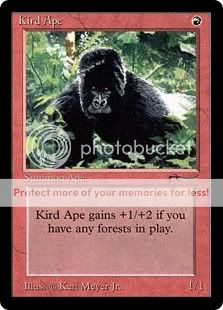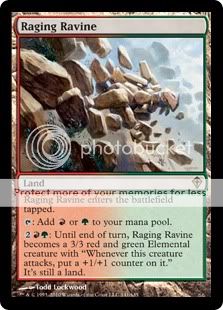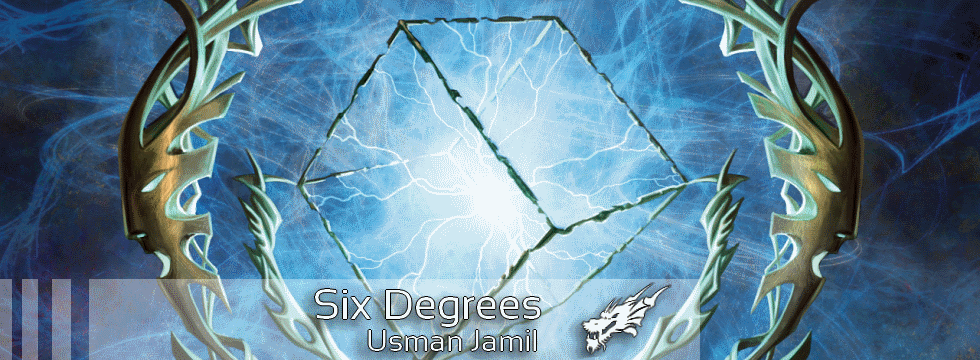Are you a Quiet Speculation member?
If not, now is a perfect time to join up! Our powerful tools, breaking-news analysis, and exclusive Discord channel will make sure you stay up to date and ahead of the curve.
In my first article for QuietSpeculation, I discussed how to build a cube by tweaking aspects of a cube's design. While some aspects of a cube's design like the rarity allowed in a cube will define many cards in it, other aspects of a cube's design can be changed pretty easily with smaller, yet still important, effects. One of these cube design aspects is alternate methods of categorizing cards and I'll be covering several methods in this article.
Literal
When cubes were initially built in the early-to-mid 2000s, many of them were similar in content as they typically had set number of cards for each section (X cards, usually 50 in white, blue, black, red, green, artifacts, lands, multicolor) with multicolor usually being bigger (60 or so) to accomodate for the tri-color cards. These cubes had a strict method of defining cards, categorizing cards like Kird Ape as red and cards like Vedalken Shackles as artifacts because their of their mana costs. Cube lists such as Tom LaPille's and modern cube lists such as Evan Erwin's, Kenny Mayer's and Anthony Avitollo's still use this literal method today.
Aside from practical reasons such as the ease of sorting cards, this method addresses one of the fundamentals inherent in the game. In order to use effects on cards, you need access to all of the sources of that mana at that time and the literal method acknowledges this. Historically, multicolor has been used as a drawback mechanism to offset more powerful effects. Neither green nor white gets an unconditional 3/3 for 2 mana, yet Watchwolf does just that because its GW mana cost constrains what decks can use the card, rewarding decks for going out of their way to accomodate for those casting costs. Keeping cards like Kird Ape and Vedalken Shackles at their literal cost addresses the factor that when a Gruul (red-green) player casts a spell, the player has to have access to the appropriate mana at that time to reap the benefits as a Gruul player, not later, since a Gruul player can play a mountain on turn 1 to cast it but not have the forest in hand until the 2nd or 3rd turn.
Other methods, however, look at these cards in a different manner.
Functional
 |
 |
The functional method categorizes cards in the section not according to their literal mana cost, but according to the section in which they will be most played and how the card ultimately functions in a cube. For example, the functional method puts Kird Ape in the same red-green section as Stormbind.
When I started making my cube several years ago based on Evan Erwin's, Tom LaPille's and other cube lists online, one of the things that bothered me was the consideration of cards like Kird Ape at their literal cost. "Isn't Kird Ape a red-green card?" I thought. Despite the fact that it had a solitary red mana symbol in its cost, I realized that Kird Ape was mostly played in Gruul decks and categorized it as such. To counter this point, I had heard arguments that "well, sometimes a mono-red deck needs a 1/1 for R, so it should be considered to be a red card" but that's hardly a reason to consider it a red card as Mons's Goblin Raiders is hardly cubeworthy.
Thus, I built my cube using the functional categorization, considering cards like Kird Ape as red-green and cards like Vedalken Shackles and Crystal Shard as blue (especially since Vedalken Shackles is flat-out useless without Islands.) This method was considered odd since it was a new idea at the time. As far as I know I was the first to use the functional method, but it has slowly started to catch on in the past few years and many cubes on the MTGSalvation cube forums use this method. [Editor's Note: By the time I created my cube, the "functional" system was the most prevalent. I rely on it keenly.]
Another useful benefit of this method is that when cards like Vedalken Shackles andCrystal Shard are considered to be artifacts, doing so essentially subsidizes blue by giving it 2 extra cards at the expense of others as artifacts are, generally, able to be used in any color of deck. Besides, when did blue need extra help in cube? The next method is the guild system.
Guild
 |
 |
 |
The guild system created by MTGSalvation user wtwlf123 as a further evolution of the functional system. The guild system takes the idea of additionally integrating mana-producing cards into the color and multicolor sections of a cube. As you can see by the above table, cards like Stormbind and Kird Ape are considered to be Gruul cards as well as guild-affiliated mana-producing lands such as Raging Ravineand Gruul Signet.
While the functional system recognizes the fact that cards like Kird Ape are played most of the time in these decks, the guild system goes one step further by realizing that color-aligned mana producers like Shelldock Isle and Faerie Conclave are going to be mostly played in blue decks and, thus, should be used in that section.
Some cubes used a "build your own land cycle" in the land section by using a cycle of one or two color-aligned lands in the land section. The problem with this is that it while colors like red easily had two really good color-aligned lands (Teetering Peaks and Smoldering Spires in commons cubes) colors like black weren't so lucky (with lands like Bujoka Bog and Piranha Marsh in commons cubes. Just say "No," kids.) Doing so violates the central tenet of cubes according to Adam Styborski: "Don't use bad cards." Even if it's just to complete a cycle, don't use bad cards. [Editor's Note: "Bad" can be relative depending upon circumstance. That said, "Don't use bad cards." is a solid rule to apply universally. Your cards should do something, and do that something well. Thank you, Eric Klug.]
Using this method helps the color pairs play to their strengths appropriately (as has been mentioned in my Cube SWOT series of articles.) Since a color pair like Boros (red-white) has little use for signets and "bouncelands" like Boros Garrison, it instead uses cards like Rugged Prairie and Goblin Trenches since these cards align much better with the Boros strategy (don't fear the drawback, Trenches is a good card, by the way.) Conversely, since Azorius (white-blue) has a tragically low number of good cards in its color pair but a high need for mana acceleration, it has much more use for its appropriate signet while being able to not having to resort to using lower-tier multicolor cards.
This method also helps to make it so that designers can use some cards in some land cycles without having to resort to using all of the cards in the cycle: since blue-based decks are generally slow control decks that seek to gain card advantage, the bouncelands are useful in these decks whereas the Ice Age/Apocalypse "pain lands" (Karplusan Forest) are more useful in aggressive-based guilds such as Gruul, Boros and Rakdos (red-black.)
Due to the fact that the guilds take some cards from both artifacts and lands, the guild system uses a smaller "colorless" section as a counterpart to the guild section. The "colorless" section essentially comprises the non-multicolor aligned artifacts and lands, containing cards like:
- Rishadan Port
- Wurmcoil Engine
- City of Brass
I have found that this method is extremely useful for managing the use of mana-producing cards. One of the main problems that I personally found was that while signets in guilds like Azorius and Dimir (blue-black) were highly used due to the controlling nature of their guilds, in aggressive-based color guilds like Rakdos and Boros were not used very much in those guilds' decks since they were the antithesis to those guilds' controlling nature. In fact, the only times that those signets were played much more in decks like the relatively atypical ramp/control builds from those color pairs (Boros or Gruul Ramp) and especially in decks like 5-color control, which could usually take these cards at a premium since they seeked to easily have access to all 5 colors of mana while accelerating.
While these 3 methods capture what many people use to categorize cards in their cubes, there are many other methods in doing so. I'll be next covering a few other features to build your own categorization.
Custom
These aren't the only ways to use alternate categorization for your cube, after all, as these 3 methods use a variety of elements. Want to make your own method? Read ahead!
Build Your Own Land Cycle!
As discussed earlier, one idea that has been used is to integrate a customizable land cycle in a land section of a cube. Using a customizable cycle of lands in a land section provides for some additional mana fixing that addresses the strengths and weaknesses of the color pairs.
While ones for color-aligned lands can be imbalanced due to the fact that ones like Volrath's Stronghold are much better than the others, the build-your-own multicolor land cycle doesn't suffer the same fate as much as the mono-color aligned lands. As mentioned with the guild system, the customizable land cycle uses lands that are closest aligned to the goals of the guild - giving a color pair like Izzet a control-friendly land like Izzet Boilerworks whereas an aggressive color pair like Rakdos would be represented by a land like Sulfurous Springs or Blackcleave Cliffs. While the power level between the lands in the cycle can be argued, in theory, it's mitigated since each color pair gets the best land for its archetype. More than one land can be used for each guild, but the number ultimately depends on how much manafixing you wish to provide in your cube.
Separation of hybrid from multicolor.
After the Shadowmoor block, many cubes tinkered with the idea of having a separate hybrid section from the multicolor section. This is because multicolor cards play pretty differently than hybrid ones. As mentioned earlier, since multicolor costs are typically used as a drawback for cards like Watchwolf and Putrid Leech, but hybrid is more of a benefit since multiple decks can use the cards easily (a base-white or base-green deck can use Kitchen Finks rather easily.)
Many cube designers, however, choose to keep hybrid cards integrated into multicolor sections since hybrid cards play optimally in multicolor sections because Kitchen Finks may be used easily in decks like a base-white or base-green deck, it is best used in a Selesnya deck.
Due to the lack of powerful hybrid cards in pairs like Golgari in Izzet (red-blue), using a separate hybrid section means that some suboptimal cards will end up making it into a cube (Golgari's best hybrid card being Creakwood Liege, but Golgari Rot Farm could arguably be used in a hybrid section, as it's usable in both base-green and base-red decks.)
Whether to integrate mana-producers into sections.
When I was talking about the use of the guild system on Twitter, In Contention co-host Kranny talked about one of the potential pitfalls of the system, saying that blue "makes out like a bandit" from getting good mana fixing, while getting less low-tier multicolor cards with the system. The point addresses the question of whether to include mana-producing cards into a cube's color (and multicolor) sections. While a card like Blazing Specter may see a fair amount of play in a Rakdos section, mana producers like Lavaclaw Reaches are almost assuredly going to make it into potential Rakdos decks. Mana producing lands like Faerie Conclave and Treetop Village will almost never be in the sideboard of base-blue and base-green decks, since including mana producers requires no further configuring a deck (as you can simply take out an island/forest to put one of the manlands into a deck.) Due to the fact that these are very "safe" picks, one could argue that they shift the power of a section unfairly.
In a section like Azorius or Dimir which has both the guild signet and the Mirrodin talisman, this can result in the section having a lot of "safe" picks, which can be problematic for a section that should reward people for taking the risk of going multicolor because, as Kranny said, those sections (and colors) can make out like a bandit. I hadn't noticed this too much personally, but it has gotten me to consider another idea.
Method that I'm considering: mix of guild and customizable.
In my cube, I am planning on using a hybrid of these methods. I have historically used the guild system for alternatively categorizing cards, but I plan on trying a slightly different method. In essence, my method acknowledges that the "safeness" of the guild system can result in some inbalance, so I am choosing to have four mana producing cards in the "guild" section in addition to four multicolor cards. Three of the guild-aligned mana producing lands are the staple cycles: the original dual lands (Plateau), Ravnica dual land (Sacred Foundry) and Onslaught/Zendikar fetchland (Arid Mesa) with the other mana producing card is determined by the goals of the guild:
- Azorius (UW): Azorius Signet
- Dimir (BU): Dimir Signet
- Rakdos (RB): Lavaclaw Reaches
- Gruul (RG): Raging Ravine
- Selesnya (WG): Horizon Canopy
- Simic (UG): Simic Signet
- Izzet (RU): Izzet Signet
- Golgari (BG): Twilight Mire (or Golgari Rot Farm, most likely Twilight Mire)
- Boros (RW): Rugged Prairie
- Orzhov (BW): Fetid Heath
Of course, this isn't set in stone, but rather an idea that I am tinkering with (as the individual cards may change.) Changing from the guild system to this method only will require changing a few cards in my cube but the overall impact on balancing my cube should be more apparent and every little bit helps when it comes to balancing a cube.
I hope that you've enjoyed reading on how several methods of categorization have been used and how they can apply to your cube.
Thanks for reading!
@UsmanTheRad on Twitter.
idratherbecubing.wordpress.com - my cube blog with my various cube lists.
The Third Power – a cube podcast that Anthony Avitollo and I co-host.






My custom model is to use a Wildcard land cycle in my land section, in which I choose which two lands best fit a color's needs and to include cards like Azorius Signet into the multicolor section.